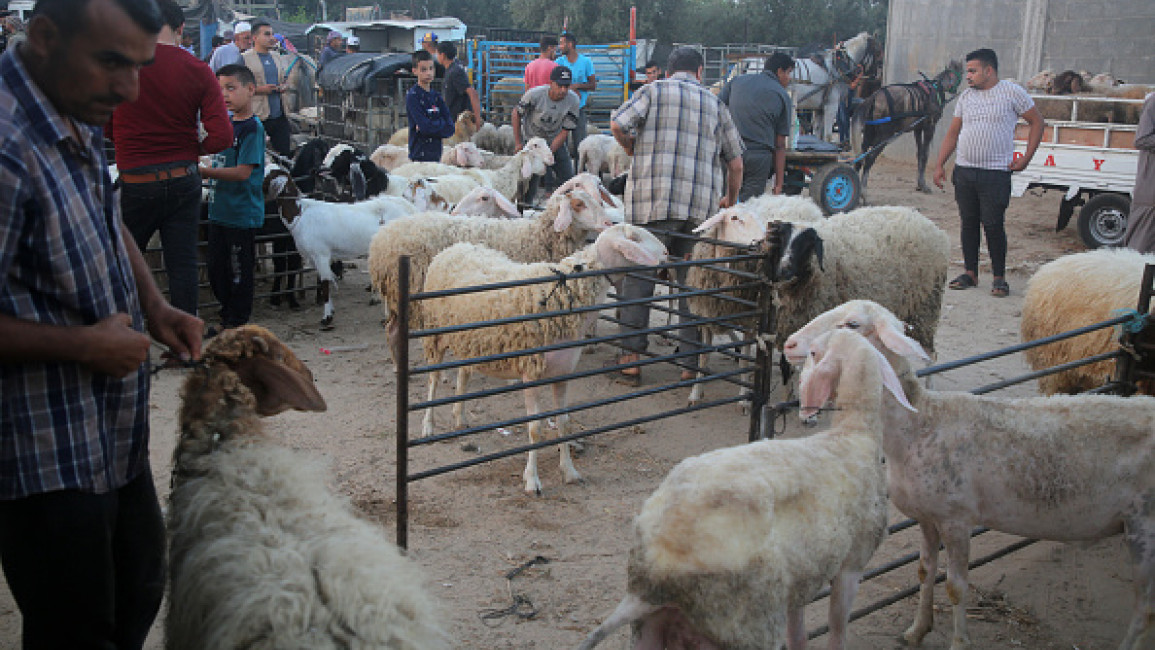Gaza hit by increasing livestock prices ahead of Eid al-Adha
A significant increase in livestock prices in the besieged Gaza Strip has forced many residents unable to purchase sheep to sacrifice as Eid al-Adha quickly approaches.
"Unfortunately, I won't be able to buy a sheep to celebrate Eid al-Adha (...) the prices are very high while we don't have the money to buy it," Ibrahim al-Nabahin, from the city of Deir Al-Balah in the centre of the strip, said to The New Arab. This is the second year in a row he is unable to buy livestock to sacrifice in celebration of Eid.
"If high prices and the difficult economic situation continues like this, I think the majority of the local population will be unable to buy livestock to celebrate Eid," he added.
On the other hand, merchants fear the outcome of residents' weak purchasing power and the high prices, which threaten the success of this season, whose failure will ensure that traders incur hefty financial losses.
Munir Abu Hasira, an owner of a livestock farm in the central Gaza Strip, complained to The New Arab about the low customer turnout days before Eid al-Adha.
"Livestock prices rose slightly this year compared to last year, due to the increase in feed prices globally," he told The New Arab, stressing that merchants "bear the largest burden in regards to high prices to not significantly increase prices and to support purchasing power.
Bees on its knees: How the climate crisis is decimating honey production in Gaza 👇 https://t.co/Dx5NNHNUW0 — The New Arab (@The_NewArab) June 29, 2022
Abu Hasira argued that the increase of US$1.6 in the price of a kilo of livestock is a small increase compared to the increase occurring in the price of fodder, pointing out that thein which a ton of fodder increased to US$660 from US$460, while a ton of corn increased to US$530 from US$300.
According to Abu Hasira, this year the price of livestock for the Eid sacrifice ranges from US$390 to US$600. However, according to the merchant, the turnout so far did not exceed 40 per cent, vastly less than the turnout last year.
Abu Hasira explained that the majority of customers who were able to buy livestock this year inquired about paying in instalments or buying alternative cheaper meat.
For his part, Taher Abu Hamad, the Director of the Animal Production Department at the Ministry of Agriculture, confirmed that Palestine is witnessing an increase in livestock prices compared to last year, pointing toward the increase in feed prices as a result of the Russian-Ukrainian war.
He noted that the Gaza Strip needs 15,000 to 17,000 head of calves, and 25,000 to 30,000 sheep during the Eid al-Adha period, all of which are available inside farms.
Opposing previous testimonies, the director believes that "the turnout is good relative to the difficult economic situation and the high prices, and there is a noticeable activity for charities to buy."
He expects that the turnout will "be satisfactory in the coming days".


![Lebanese protesters take part in a demonstration in support of Palestinians on 18 May 2021 in Beirut, Lebanon. [Getty]](/sites/default/files/styles/image_330x185/public/2021-06/GettyImages-1232967618.jpg?h=58c8a5e7&itok=0HHt3VmF)
